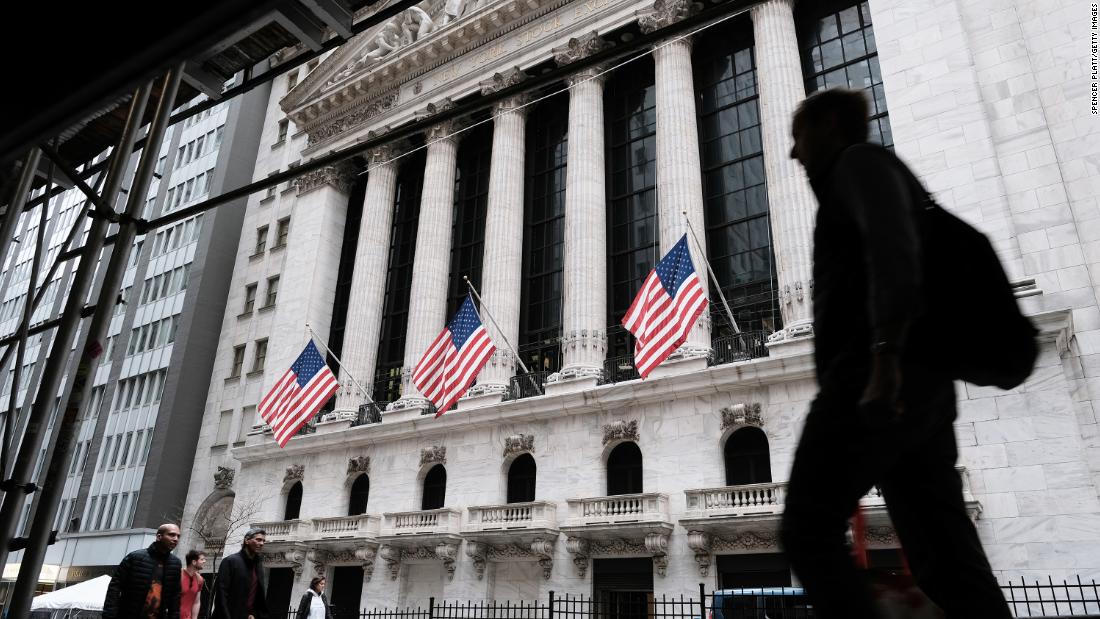Written by Oscar Holland, CNN
The last year in architecture will be remembered as one of firsts, from the world’s first
“upcycled” skyscraper winning World Building of the Year to Burkina Faso-born Francis Kéré becoming the
first African architect to win the coveted Pritzker Prize.
It was also a year in which we lost industry giants like Ricardo Bofill and
Meinhard von Gerkan, while gaining long-awaited new landmarks like the
Taipei Performing Arts Center and New York’s
Steinway Tower.
With construction projects often taking years to complete, delays caused by Covid-19 are still being felt. But 2023 nonetheless promises to be a year of remarkable new openings, whether it’s the world’s second-tallest tower or an interfaith religious complex in Abu Dhabi.
Here are 9 of the architectural projects set to shape the world in 2023:
National Library of Israel, Jerusalem, Israel
National Library of Israel Credit: Herzog & de Meuron
Having outgrown its longtime home, the National Library of Israel — and its vast archive of books, manuscripts and photographs — is relocating to a brand new building next to the country’s parliament, the Knesset.
The building’s distinctive upper volume resembles a huge block of carved rock, with local limestone mixed into the cement as a nod to Jerusalem’s historic color palette. Inside, facilities including an auditorium, a youth center and various exhibition spaces, are configured around the 50,500-square-foot reading hall.
Swiss architecture firm Herzog & de Meuron’s design is intended to reflect the institution’s values of openness and accessibility, from a soaring circular skylight to the ground-level display cases that make items from the library’s collection visible to passersby.
Nordø, Copenhagen, Denmark
Nordø Credit: Rasmus Hjortshøj
Copenhagen has been designated UNESCO’s World Capital of Architecture for 2023, and the Danish capital is brimming with examples of sustainable design.
Chief among them is the ongoing redevelopment of the once-industrial Nordhavn (or Northern Harbor) into a
pedestrian-friendly “smart” district complete with green energy supplies and a “super bikeway” link to the city center. Recent years have seen abandoned
grain and cement silos converted into offices and apartment blocks, while a sprawling United Nations campus, UN City, opened there in 2013.
Danish architecture firm Henning Larsen’s latest addition to the neighborhood, Nordø, is emblematic of the transformation taking place. With a redbrick facade that honors to the site’s industrial past, sizable public gardens and a rooftop terrace, the 115-home development promises residents an “island oasis” with easy access to the district’s growing collection of restaurants and public spaces.
Lola Mora Cultural Center, San Salvador de Jujuy, Argentina
Lola Mora Cultural Center Credit: Pelli Clarke & Partners
The late Argentine architect
César Pelli may be best known for landmark skyscrapers like the Petronas Towers in Kuala Lumpur and New York’s World Financial Center, but his firm’s first new project in South America since 2018 is an altogether humbler pursuit.
Nestled in a forest overlooking the city of San Salvador de Jujuy, northwest Argentina, the Lola Mora Cultural Center is dedicated to its namesake sculptor, one of the early 20th century’s pioneering female artists. In addition to a selection of her works, the institution will house an interpretation center, restaurant, library and atelier for visiting artists.
The building, whose form was inspired by a sculptor’s chisel, is described by architects Pelli Clarke & Partners as being “net-zero energy,” though it may go further still: With the help of on-site wind turbines and solar energy production, the center is expected to generate 20% more energy than it consumes.
Abrahamic Family House, Abu Dhabi, UAE (pictured top)
Abrahamic Family House Credit: Adjaye Associates
Almost 80% of the United Arab Emirates’ population is Muslim, but at Abu Dhabi’s new interfaith complex the three Abrahamic religions (Islam, Christianity and Judaism) are of equal stature. Occupying three identically-sized cubic forms on a “secular” visitor pavilion, the project’s mosque, synagogue and church stand in aesthetic harmony.
Ghanaian-British architect David Adjaye’s firm, Adjaye Associates, said it looked to the faiths’ commonalities in its designs, though each of the three main buildings has a different orientation on the site.
As well as offering places of worship, the complex is intended to encourage dialogue and cultural exchange. To that end, a fourth space — an educational center — will be somewhere “for all people of goodwill to come together as one,” the architects
said.
Merdeka 118, Kuala Lumpur, Malaysia
Merdeka 118 Credit: PNB Merdeka Ventures Sdn. Bhd.
Standing over 2,227 feet above
Malaysia’s capital, Kuala Lumpur, Merdeka 118 is now the world’s second-tallest building behind Dubai’s Burj Khalifa. It is also one of just four so-called “mega tall” skyscrapers — a term used to describe towers measuring over 600 meters, or 1,969 feet — in the world.
When the building
topped out in 2021, then-prime minister Ismail Sabri compared the design to the image of former leader Tunku Abdul Rahman raising a hand in the air upon announcing the country’s independence at the neighboring Stadium Merdeka in 1957. The Australian architecture firm behind the project, Fender Katsalidis, meanwhile says the triangular glass planes on the building’s facade were inspired by patterns found in Malaysian arts and crafts.
Set to complete in the second half of 2023, the building (and the sprawling mall at its base) promises around 1 million square feet of retail space, as well an 1,000-seat theater, offices, a hotel and Southeast Asia’s highest observation deck.
Destination Crenshaw, LA, USA
Destination Crenshaw Credit: Perkins&Will
When a new portion of the LA Metro’s K Line threatened to cut Crenshaw Boulevard in two, locals in the historically Black neighborhood saw an opportunity to push for new infrastructure in an area that has long suffered from under-investment. The resulting $100 million public-private initiative, Destination Crenshaw, hopes to do precisely what its name suggests: to make the Crenshaw district a destination in its own right, not just a thoroughfare.
Designed by architecture firm Perkins&Will, the 1.3-mile cultural corridor will feature pedestrian walkways, ten new public parks, street furniture and over 100 artworks spotlighting Black art and culture. Among the murals, statues and permanent installations will stand African American artist Kehinde Wiley’s reimagining of a confederate statue.
It won’t all be completed by the end of 2023, but several major components — including the largest of the landscaped areas, Sankofa Park, and four “pocket” parks — are expected to be open by the fall.
AMRF First Building, Sydney, Australia
AMRF First Building Credit: Hassell
A major urban transformation is underway in Sydney, where a huge precinct is being built to service — and benefit from — the city’s new international airport. Officials hope the district, dubbed the Western Sydney Aerotropolis, can become an economic center for the science, technology and creative industries, creating
over 100,000 new jobs over the next three decades.
With the airport not due to open until 2026, there is a long way to go. But every new city begins with a single building.
The Aerotropolis’ first structure — appropriately named the Advanced Manufacturing Research Facility (AMRF) First Building — is scheduled to complete in late 2023, acting as a visitor center and hub for the wider development. Built from prefabricated timber modules and inspired by the movement of water, the light-filled design was led by architecture firm Hassell in collaboration the Indigenous designer Danièle Hromek of Djinjama, a First Nations cultural research and design practice.
Kempegowda International Airport, Bengaluru, India
Kempegowda International Airport Credit: SOM/ATCHAIN
India’s third most populous city, Bengaluru, is set to welcome its long overdue airport expansion, with Kempegowda International’s 2.7-million-square-foot Terminal 2 entering operation early 2023. The project will increase the airport’s annual visitor capacity by an estimated 25 million, eventually rising to 40 million after the completion of its second phase.
Verdant airports like Singapore’s Changi have raised expectations of how terminal buildings can look and feel. And architecture firm Skidmore, Owings & Merrill has taken a similarly nature-inspired approach it has dubbed a “terminal in a garden” — a series of interconnected buildings joined by landscaped spaces and populated with plants, bamboo-clad pavilions, indoor waterfalls and rattan furnishings.
Grand Egyptian Museum, Giza, Egypt
Grand Egyptian Museum Credit: Mohamed El-Shahed/AFP/Getty Images
Costing
over $1 billion and housing some of human history’s most precious objects, the long-awaited Grand Egyptian Museum has been beset by delays since a design competition was announced in 2002. It was even — optimistically, perhaps — included in this very list some
five years ago.
Egypt’s Ministry of Tourism and Antiquities did not respond to CNN’s repeated requested for confirmation that 2023 will, finally, be the year museum opens its doors, though there are plenty of promising signs (not least the announcement of a
major concert there in January).
Designed by Dublin-based Heneghan Peng Architects, the 5.2-million-square-foot structure features exhibition spaces, a conservation center and an atrium tall enough to house an enormous statue of Ramses II (with headroom to spare). Triangular forms dominate the glass-fronted facade and flow throughout the building, a motif that nods to the neighboring Pyramids of Giza.
Top image: Abrahamic Family House, Abu Dhabi.
This article was updated to clarify Hassell’s role and to name the firm that designed Destination Crenshaw
























